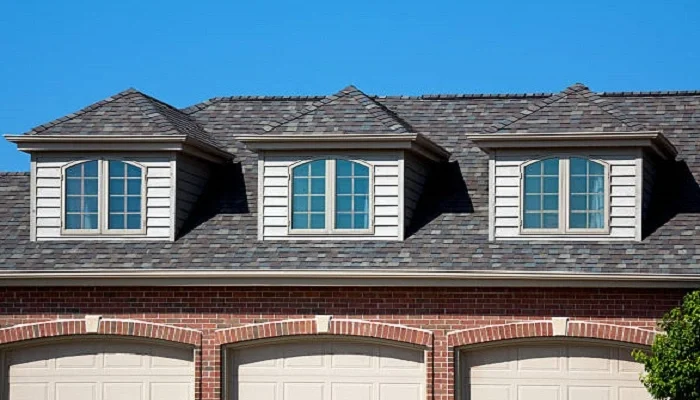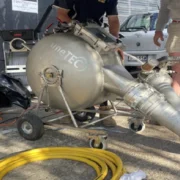Why Energy Efficiency Matters for Windows
Windows are a crucial part of your home’s envelope—they contribute significantly to your house’s overall energy use. According to the U.S. Department of Energy, inefficient windows can be responsible for almost 30% of residential heating and cooling energy loss. As energy prices rise and concerns about sustainability grow, improving your home’s efficiency through high-quality window upgrades can offer long-term benefits for you and the planet.
When evaluating options for window replacement, it’s essential to work with experienced professionals known for quality and expertise. The team at Renewal by Andersen Connecticut can guide homeowners through the process, ensuring selections that best fit their home’s style, climate demands, and efficiency goals.
Materials and Construction: Making Sense of Choices
The frame material you choose is one of the first significant decisions in upgrading to energy-efficient windows. Standard options include wood, vinyl, fiberglass, aluminum, and composite. Each material offers unique advantages. Vinyl windows are cost-effective, low-maintenance, and provide excellent thermal resistance. Wood frames boast a timeless aesthetic and natural insulation properties, but require ongoing maintenance to prevent weathering and rot. Fiberglass and composite options blend high efficiency with durability, many offering reinforced internal chambers or foam-filled cores to boost insulation and minimize energy transfer.
Beyond the frame, construction methods—such as multi-chamber designs, advanced weatherstripping, and thermal breaks—play an important role. These features reduce air leakage, buffer against extreme temperatures, and improve energy performance. Homeowners should match materials to their budget, climate, and maintenance preferences to optimize performance and curb appeal.
Understanding Window Glass Technologies
Glass technology has evolved dramatically over the past decade, driving window efficiency to new heights. Most energy-saving windows today use double- or triple-pane glass units to create extra insulation layers. The spaces between the panes are often filled with inert gases such as argon or krypton, which are denser than air and thus better at preventing heat transfer. In addition, Low-E (low-emissivity) coatings are commonly applied to glass surfaces to reflect infrared and ultraviolet rays. This helps maintain comfortable indoor temperatures year-round and reduces UV-driven fading of interior furnishings.
According to Consumer Reports, these technologies can boost window efficiency by over 20% compared to conventional models. The decision between double- or triple-pane construction and which specialized coatings and gases to use should be informed by the local climate and budget.
Demystifying Window Ratings and Certifications
To make well-informed decisions, homeowners should understand the key window performance ratings and their significance. The U-factor measures how well a window insulates—the lower the U-factor, the better the insulation and energy savings. The Solar Heat Gain Coefficient (SHGC) indicates how much heat from sunlight the window allows inside—lower values are generally better for hot climates. At the same time, a slightly higher SHGC can be beneficial in colder regions. Finally, Visible Transmittance (VT) measures the amount of natural daylight that passes through the window glass.
For maximum assurance, look for products that carry the ENERGY STAR label or are certified by the National Fenestration Rating Council (NFRC). These certifications ensure the windows have been independently tested and meet strict efficiency criteria for your climate zone.
Proper Installation: The Unsung Hero
Even the best-designed window won’t deliver peak energy performance if installed incorrectly. Improper installation can cause air leaks, water intrusion, and heat loss, undermining energy savings. Professional installers follow best practices for flashing, insulation, and caulking, helping to form a tight seal with zero gaps or drafts. Reputable companies support their work with warranties and encourage homeowners to check references and customer reviews before committing to a service provider.
Maintenance Tips for Longevity
Once your efficient windows are in place, maintaining them will help safeguard your investment and extend their lifespan. Clean glass and sashes regularly with mild detergent and water; abrasive cleaners should be avoided to prevent scratches. Inspect weatherstripping, caulking, and hardware each season, addressing any wear immediately to prevent air leaks and moisture damage. Repaint or reseal wood windows as necessary to protect against the elements. If condensation appears between glass panes, contact your installer, as this signals a seal failure needing prompt repair.
Financial Benefits and Incentives
Upgrading to energy-efficient windows can provide a significant return on investment. Many homeowners experience a 10–25% reduction in heating and cooling costs, depending on climate and the efficiency of the previous windows. Additionally, both state and federal energy programs frequently offer incentives, rebates, or tax credits to offset installation costs. Consult official resources like the IRS Energy Efficient Home Improvement Credit for the latest information on available financial incentives in your area.
Frequently Asked Questions
- How soon will energy savings show up? Most homeowners notice lower energy bills within the first cycle after installation—especially during temperature extremes.
- Is it worth investing in triple-pane windows? Triple-pane models deliver top insulation for cold climates, though double-pane windows are often optimal in moderate areas for cost-effectiveness.
- What signs indicate the need for window replacement? Consistent drafts, visible condensation between panes, and difficulty opening or closing point to inefficiency and potential structural issues.
- Will upgrading enhance my home’s value? Yes—energy-efficient upgrades attract buyers, improve curb appeal, and typically raise resale value in today’s eco-conscious market.
Investing in the right windows goes beyond aesthetics—it directly impacts comfort, energy bills, and long-term home value. Homeowners can make confident choices by understanding materials, ratings, and installation quality. Prioritizing efficiency today ensures a more sustainable, cost-effective future while creating a living space that’s both functional and inviting.
Drain Cleaning Business: Clearing the Path to a Healthy Home









Comments